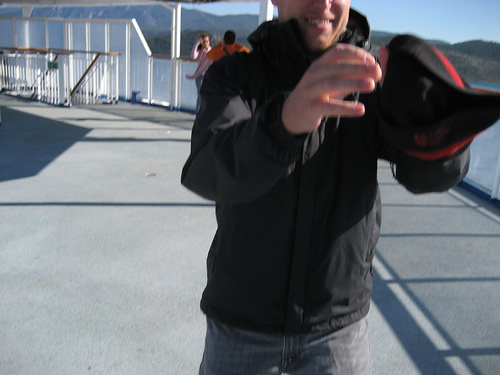
This past Saturday I went to see 2 of the genocide memorial sites about 25k outside of Kigali. I took Kaarli - one of my friends from Nairobi who's also here for work for a couple weeks, and Leonard - one of my colleagues from work here with me for this project. This post will not be easy to read.
The guide books gave some warning before hand but nothing could have really prepared me for the experience.
As we walked into the church compound, there was a father and son (mzungus) who were apparently just wrapping up their tour of the church. They were standing in a kind of awkward silence and soon took our arrival as their cue to leave.
After introductions, our guide, Mugabe Charles (he would later enthusiastically deny any relation to the man of the same name in Zim) began showing us around the small church.
Everything was pretty much exactly as it had been following the massacre in April of 1994, excepting that the bodies had been removed and most of what had to have been simply massive amounts of blood had been cleaned. The church benches remained, each of them covered with piles of the victims' clothes - the endless piles were a sobering reminder, everywhere you looked.
The ceilings, walls, and floors were all pocked where grenade shrapnel had hit them - apparently the amount of bodies was so staggering that at the time it had been hard to be sure that all were dead, so grenades were used to try to seal the bloody deal. The blood flew up to the ceiling, 25 feet above.
Some of the victims had been barricaded in a room, and when forced out were tortured in front of the others. They cut off their arms and then used the arms to "wave goodbye" to the other "cockroaches," before they were killed. The interhamwe had no guns, although the soldiers outside did, and those with money had the option to pay the soldiers to shoot them, giving them a quick death. Those who tried to escape met their end at the soldiers' bayonets. With no guns, the killers instead used crude tools and machetes. And hammers. So many of the skulls in the mass grave evidenced blunt trauma to the side of the head - the victims were pressed against a wall and then the hammer was used to the side of the skull.
Charles had been in the church those 2 evil days. He was 8 years old. His brother at one point had left him hiding in a corner, smeared with blood and covered with the bodies of others. He went looking for the father, but never returned, and Charles later found him, dead. His father was still alive after having his head hammered, and as he was dying he begged Charles to hide. Charles lost his composure but some other survivors were able to quiet him.
There had been pregnant women. One was a Hutu who had been married to a Tutsi man and carried his baby. The killers put her on the church alter (still to this day with the blood-stained covering on it), and cut out the child to "remove the sin," before killing her. They did this with a number of the pregnant Tutsi women as well. There was a lot of raping, and after raping, a typical means of execution was a spear through the genitals and out through the upper back. There had been one woman with her child on her back that was killed in this way, and the spear went through both her and the child. Her remains had been kept in this state in a viewing chamber below the floor of church, but after too much trauma for the viewers, it was put inside a coffin, that remains there to this day.
The same chamber included about 150 or so skulls and various bones on display, as well as some of the ID cards of the victims.
After this, Charles took us back behind the church to the mass grave there. We descended into a dark, dry hall that contained rows of shelves, 4-5 high, 15 feet above us, each 10 feet wide and deep. All covered with endless, countless skulls of the victims. The lower shelves were filled with other bones - mostly limbs from the look of it. The remains of thousands. It was there that Charles told us that some 6,800 people died in those 2 days at the church, another 4,000+ in the surrounding areas of the village. 7 survived, Charles being the youngest of them. 6,800 people, systematically, brutally dispatched - all in a church smaller than the house I grew up in. No wonder they couldn't find all the survivors among the mountains of the dead.
I have seen dead bodies in my life, in the typical medical and funeral settings, and even in the naked, bloody aftermath of rape and murder, but I have never been so utterly surrounded - engulfed - by the presence of death. And for me, it was 15 years later. Charles had been there on that day, and had been there every year since. The village was his home. His family's killers still lived there, those who had escaped conviction and justice, and who had threatened Charles in the aftermath to not speak out against them again.
It was little wonder that he still could not forgive.















